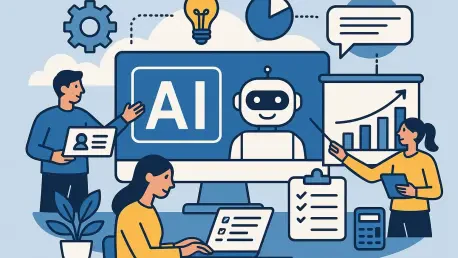In an era where efficiency and seamless communication are paramount, companies are aggressively leveraging technology to break productivity barriers. AI-powered productivity tools have emerged as trailblazers in this landscape. This review provides an in-depth exploration of how these tools, particularly those integrated into Google Workspace, revolutionize work environments by fostering enhanced collaboration and automation.
Unpacking AI-Powered Productivity Tools
AI-powered productivity tools owe their existence to developments in artificial intelligence and machine learning. These tools are designed to assist users in completing tasks more efficiently by automating repetitive processes, enhancing communication, and facilitating real-time collaboration. They form an essential part of the modern technological landscape, introducing innovations that cater to the growing demands of remote work and digital collaborations globally.
At the core of these solutions is the capacity to use AI to automate complex tasks traditionally requiring human intervention. These tools not only facilitate operational efficiency but also redefine workflow processes, pushing the boundaries of what is possible in an increasingly digital setting.
Innovative Features and Core Components
Real-Time AI Language Translation
Real-time language translation capabilities within productivity tools offer unparalleled benefits in cross-linguistic communication. Using advanced algorithms, these tools interpret and translate spoken words instantaneously while preserving tone and expression, making interactions more natural and effective. This feature particularly benefits enterprises operating globally, as it reduces communication barriers and opens doors to smooth international collaborations.
3D Video Conferencing
With the advent of technologies like Google Beam, 3D video conferencing is no longer a futuristic concept. These tools utilize an advanced array of cameras that capture and merge video streams, creating vivid, lifelike 3D representations on screens, akin to in-person experiences. These innovations aim to mimic face-to-face interactions by retaining social and visual cues, thus revolutionizing remote meetings and enhancing user engagement.
Automation in Workflows
AI-driven automation continues to redefine what is possible in workflow management. With solutions like Workspace Flows and the deployment of AI agents known as Gems, businesses benefit from unprecedented levels of efficiency and flexibility in managing processes and tasks. Gems are particularly noteworthy for their ability to autonomously handle customer queries, using integrated AI models for problem-solving and task completion, thereby offering significant productivity gains in various corporate operations.
Recent Developments and Market Trends
Emerging trends underscore a growing reliance on AI to automate routine functions and enhance productivity in business environments. The integration of AI in productivity tools points toward an era where language barriers become obsolete, communication becomes seamless, and workplace interactions are deeply enhanced. In line with broader market expectations, companies increasingly prioritize improving user experience and operational efficiency, driving further innovation and development in AI technology.
Notably, AI-generated features are becoming standard in productivity suites, offering personalized recommendations, smart replies, and streamlined scheduling solutions. These trends indicate a favorable trajectory toward creating more intuitive and globally inclusive digital environments.
Real-World Implications and Applications
Industries such as international business, customer service, and digital media are already experiencing the profound impact of AI-driven productivity tools. Real-world applications include enhancing multilingual customer support, managing remote teams efficiently, and hosting virtual conferences that feel personal and engaging. The deployment of these technologies especially benefits sectors where communication and collaboration are critical to success.
Furthermore, niche use cases such as tailored content delivery and targeted advertisements illustrate how AI-powered systems are merging business operations, providing companies with actionable intelligence and immediate operational benefits.
Addressing Challenges and Limitations
Despite their promise, AI-powered productivity tools face hurdles that could limit their potential. Technical challenges, privacy concerns, and regulatory requirements are pressing issues that developers and companies must navigate diligently. Moreover, the integration of AI into existing systems requires substantial investment and training, which can delay mainstream adoption in certain regions or industries.
Efforts are underway to address these limitations, including advancements in transparent AI model development, stronger data protection regulations, and solutions focused on user-friendly interfaces and integration pathways.
Future Prospects
Looking ahead, AI productivity tools are set to grow more influential. Continued enhancements in AI algorithms are expected to yield even more robust communication and automation capabilities. The potential to bridge digital divides and offer inclusive solutions is immense, with new developments promising breakthroughs that further redefine the professional landscape.
As technology evolves, expectations center on tailored AI solutions that adapt seamlessly to user needs, prioritizing flexibility, security, and user experience.
Final Thoughts
Today’s AI-powered productivity tools are at the forefront of digital innovation, playing a transformative role in reshaping modern work environments. They reflect a deeper understanding of organizational needs and offer scalable, intelligent solutions driving efficiency and collaboration. This review highlights how these tools have reshaped productivity expectations, set new standards for communication, and addressed complex workflow challenges with unprecedented efficiency. As industry trends signal continued evolution, the future of AI in productivity remains bright, promising extensive potential for businesses willing to embrace technological advancements.









